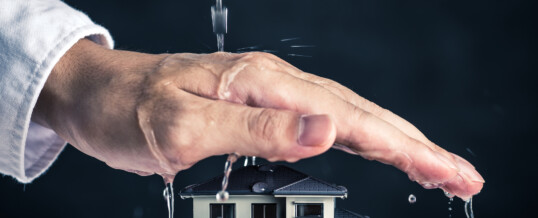
Did you know that Henry Flagg French invented french drains? He designed them in Massachusetts in 1859.
Do you have problems with groundwater or have poor drainage? French drains are frequently used to help yard water runoff, basements from flooding, and foundation damage. They’ve been around for more than 160 years.
Standing water can be unsafe for your home and family. Imagine walking down into the basement and finding your floor flooded with water. Water seepage, flooding, leaks, and dampness are all challenges that all homeowners experience at some time.
Allow us to give you a step-by-step guide on installing an indoor French drain!
What Is an Indoor French Drain?
What exactly is a French drain system, and how does it help drain water from beneath your home? It may sound posh, but it’s simply a gravel trench that helps keep your basement dry all through heavy rains and floods.
A French drain is a simple yet efficient approach to preventing floods or standing water by building an effective drainage system. It’s a trench dug in the ground coated with a non-woven fiber reinforced fabric filled with gravel.
Basements, perhaps predictably, are more likely than any other part of your house to absorb water. This is because they are below the ground’s surface.
Drainage may not entirely prevent the possibility of flooding. However, drainage is typically installed during the building of a new home to avoid water in the basement from pooling.
Before Installing a French Drain
Before starting your french drain installation, it’s good to take the following steps. First, you don’t want to be caught out in the middle of construction!
- Ensure no electrical wires or pipelines are going through the area where you’ll be cutting the channel.
- As a general guideline, choose a runoff location
- Use a slope. If there is no existing slope, dig deeper to build one
If you are not sure how to do this yourself, hire a professional company.
Installing an Interior French Footing Drain
A French drain installed inside your basement will manage any leaks and keep your interior dry and protected. The water is directed to drains and then through gravity to a sump pump. The sump pump then discharges the water outdoors or into a drain line.
Experts in waterproofing will install a french drain by cutting a channel into the basement slab around the perimeter of the inner wall.
A standard interior basement footing drain system consists of the following components:
- The slab of the basement floor is cut away in some places along the perimeter of the outer wall
- Digging up a shallow trench around the foundation’s interior beside the footing
- Sloping this trench towards the final outlet
- The perforated pipe is then placed in the trench and surrounded by drain rock
- The piping is then connected to a sump pump
- Then you complete the fix by re-pouring the basement slab in the work area
The collected water is gravity-drained or mechanically pumped through a sump pump outside of the home.
Installing an Exterior Basement Foundation Footing Drain
Older homes built before building regulations required basement drainage are at a higher risk of water entering and remaining in the basement.
And, once your basement has water in it, the niggling moisture can cause problems in a variety of ways, from damaged belongings to mold growth.
Generally, the construction of an exterior basement foundation footing drain is as follows:
- Digging up a trench all around the house, below the concrete foundations
- After that, the foundation wall is thoroughly cleaned and sealed with a waterproof sealant
- On the grade, a perforated pipe is placed to slope forward into a final outlet
- Drain rock is then placed over the drain pipe
- In most instances, a new narrow drain pipe is fitted to control roof water
- Filter cloth is positioned over the drain rock to prevent soil invasion and future blockages
The collected water is gravity-drained or mechanically pumped through a sump pump to an outlet source, such as a storm drain system.
Using Sump Pumps For French Drains
Sump pumps are typically installed as part of a drainage system for a crawl space or basement.
It’s common to have pumps installed in containers or catch basins that range in size from 18 to 30 inches in diameter. Sump pumps can either be in or out of buildings. To control the water level in the catch basin, pumps are equipped with fixed or adjustable floats.
Sump pumps are typically covered by a five-year manufacturer’s warranty. However, on average, with regular maintenance, they can last much longer.
Also, in the event of a power outage or an unforeseen pump malfunction, you can get battery-operated pump backup systems and high water level alarms.
Drain It Away Down the Drain!
If you’re building a new home and learning about your waterproofing choices, or you’re dealing with a water issue in your present home, these indoor french drain methods could help prevent or even rectify a damp basement.
If you are experiencing flooding or dampness in your home that you cannot control, contact us, and we will assist you promptly!
ShareMAY
